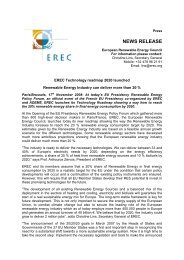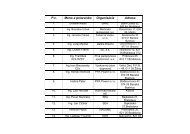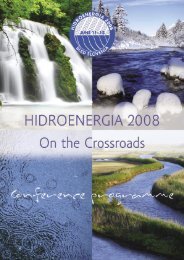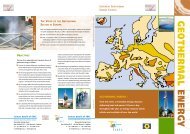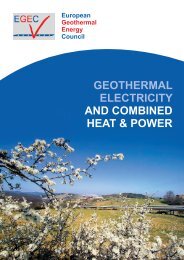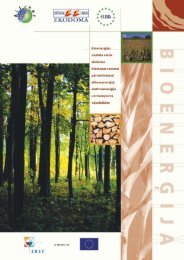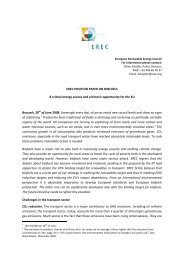CTO Assessment - European Commission
CTO Assessment - European Commission
CTO Assessment - European Commission
You also want an ePaper? Increase the reach of your titles
YUMPU automatically turns print PDFs into web optimized ePapers that Google loves.
NAVARRE<br />
Renewable Energy Plan<br />
Contact: Ms Ana Olaiz • Department of Industry, Technology, Commerce and Labour<br />
Navarre Regional Government • Parque Tomás Caballero, 1 - 6th floor.<br />
31005 Pamplona • Spain •Tel: 00 34 848 42 35 95 . Fax: 00 34 848 42 35 90<br />
Main aims and motivations<br />
Navarre, with a population of just over<br />
578,200 covering 10,391 Km 2 , is a world<br />
benchmark for renewable energies. Thanks<br />
to the 1995-2000 Energy Plan promoted<br />
by the Government Navarre to foster energy<br />
conservation and efficiency, favour the<br />
best use of RES and extend the energy<br />
transport and distribution network, by<br />
2001 Navarre was already the second<br />
Spanish region in the generation of electricity<br />
from the wind. In 2002, 60% of the<br />
electricity consumed in Navarre came from<br />
renewables.<br />
The Navarra Energy Plan Targets for<br />
2005 foresees yet again a doubling of RES<br />
electricity capacity, including the doubling<br />
of wind installed capacity and expansion<br />
in solar photovoltaic and solar thermal<br />
generation – aiming towards a 97% green<br />
electricity coverage by 2005.<br />
The initiative<br />
The development of renewable energies in<br />
Navarre has meant that major initiatives<br />
could be carried out.<br />
In 2004 the biodiesel manufacture plant<br />
located in Carraposo will enter service,<br />
with a production capacity of 35,000<br />
tonnes/year.<br />
An electricity generation plant from the<br />
combustion of waste cereal (straw) with<br />
a capacity of 160,000 tonnes/year. Located<br />
at Sangüesa, it has an installed<br />
capacity of 25MW and produces 200<br />
GWh/year.<br />
Wind energy has also generated an active<br />
industrial and productive sector in<br />
the region, one with a bright future and<br />
a clear export-led orientation. The need<br />
to encourage the creation of a windpower-led<br />
industrial sector in Navarre<br />
was envisaged from the outset. Industrial<br />
plants to produce this type of equipment<br />
cover turbine assembly, the manufacture<br />
of blades, turbines, towers and<br />
control equipment and a wide range of<br />
wind turbine components.<br />
At the end of 2001 the largest photovoltaic<br />
solar energy plant in Spain, located<br />
in Tudela, entered in service with<br />
1.2 MW capacity.<br />
Overall Evaluation<br />
Against a forecast capacity for 2002 of<br />
341 MW from a range of renewable<br />
energy sources, 590 MW have already<br />
been installed, of which 550 MW correspond<br />
to the wind power sector.<br />
There are 107 hydropower plants in<br />
operation, representing 15% of the region’s<br />
energy consumption in 2000.<br />
Wind power-based installed capacity in<br />
2000 produced the equivalent of 40%<br />
of the total electricity consumption of<br />
Navarre over a full year.<br />
Installed capacity in renewables in 2000<br />
was 773 MW, generating 55% of the<br />
electricity consumed in Navarre.<br />
In 2000 alone the emission of<br />
1,798,000 tonnes of CO 2<br />
to the atmosphere<br />
was avoided, double the figure<br />
forecast in the Energy Plan.<br />
Investments of over 382 million euros<br />
have been made in renewable energy production<br />
facilities.<br />
More than 30,000 schoolchildren have<br />
visited the travelling exhibition on energy<br />
saving and renewable energy in the<br />
main towns and cities of Navarre.<br />
Enabling factors<br />
Wide-ranging acceptance of wind farms<br />
by the community.<br />
The existence of private developers that<br />
have made a strong commitment and<br />
large investments particularly in the<br />
launch stage, when the situation and<br />
technological costs represent considerable<br />
risks.<br />
Care for the Environment<br />
Care for the environment is something that<br />
is given special attention in the development<br />
of wind power in Navarre. Wind farms<br />
are subject to environmental studies and<br />
the Government of Navarre applies<br />
changes to their design before they are<br />
authorised. Certain sites have been ruled<br />
out as a result of their impact on the environment,<br />
and the location of some turbines<br />
has been modified in projects that have<br />
received approval. Navarre has some of<br />
the most advanced legislation in Spain on<br />
the environmental monitoring of wind<br />
farms. The minimum distance between turbines<br />
in the most recently authorised facilities<br />
is 200 metres, to ensure that there<br />
is space for birds to pass. Each wind farm<br />
has its own environmental monitoring programme<br />
to assess the impact of the turbines<br />
on bird life. Experiments have also<br />
been carried out in the form of turbine shutdowns<br />
at times when there are a large number<br />
of birds, to facilitate their flight paths.<br />
Replication and Partnership<br />
In 2003 alone the region received visits<br />
from representatives of the Environment<br />
Ministries of the Czech Republic, Hungary<br />
and Slovenia and different regions in Ireland,<br />
Rumania, Slovakia, Italy and Belgium,<br />
as well as the Energy Ministry of<br />
Tasmania (Australia).<br />
Navarre participates in a renewable energy<br />
project in Tunisia, in collaboration with the<br />
Spanish Agency for International Cooperation<br />
under the Azahar programme. The Community<br />
provides technical and legal assistance for<br />
the installation of wind turbines. The partnership<br />
programme contributes to the design of<br />
an energy model in which guaranteed supplies,<br />
at competitive prices, is compatible with care<br />
for the environment. This model involves technology<br />
transfer in clean energy sources from<br />
developed to developing countries, to increase<br />
their economic development and the application<br />
of measures to reduce polluting emissions.<br />
60 <strong>CTO</strong> - Showcase



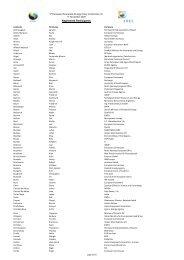
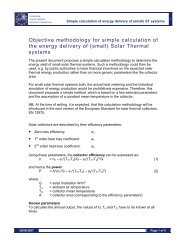
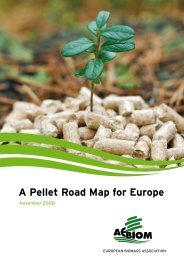
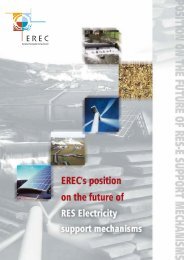

![Energy [R]evolution - Greenpeace](https://img.yumpu.com/47174859/1/184x260/energy-revolution-greenpeace.jpg?quality=85)
